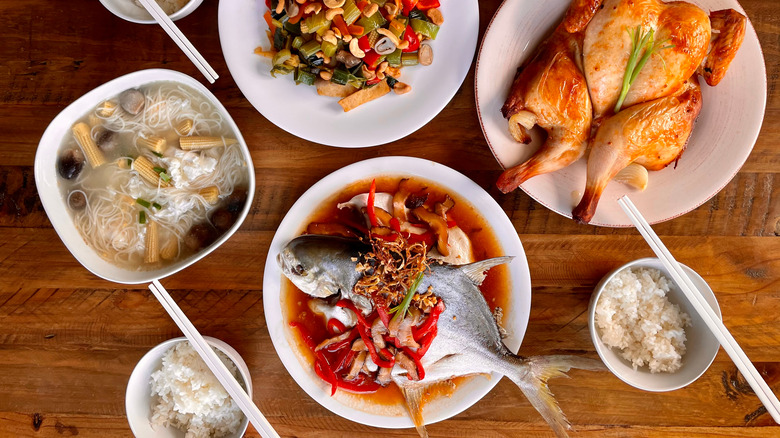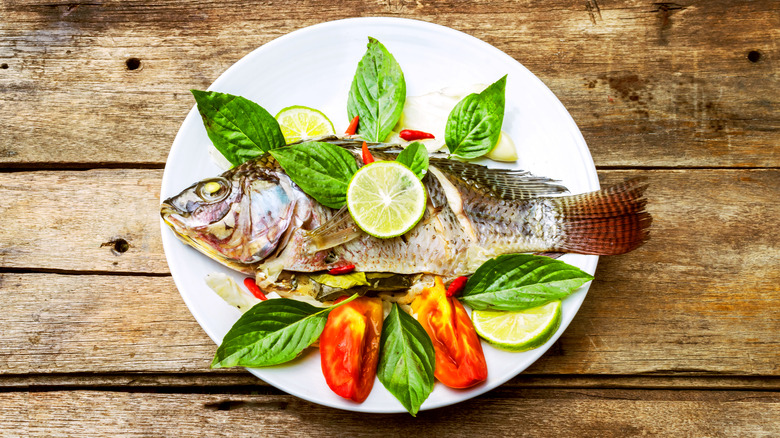The Reason Fish Is A Traditional Lunar New Year Food
Every year, people around the globe celebrate Lunar New Year, also known as the Spring Festival in China or, more commonly, the Chinese New Year (via Cnet). Legend has it that at the beginning of each year, a monster by the name of Nian, the Chinese word for "year," would come and eat villagers. The only way to drive the monster away was to use loud noises, bright lights, and the color red which are all now associated with Lunar New Year celebrations.
While the day officially falls on February 1 this year, Lunar New Year celebrations tend to take place over a weeklong period of time. Over the week, families gather and celebrate the end of winter, the onset of spring, and what is seen as the time of reunion and the rebirth of ancestors. While the lantern festival, dragon parades, fireworks, and coin-filled red envelopes are all a part of Lunar New Year celebrations, another significant part of the festival is the food.
A feast is prepared for Lunar New Year and each dish on the dinner table is rooted in tradition with a symbolic meaning related to the start of the new year. One food that you will almost always find on Lunar New Year is fish, but it's not just any fish. A steamed whole fish is one food traditionally eaten as a Lunar New Year food (via Food Network).
Fish has a symbolic significance in Lunar New Year celebrations
Over Lunar New Year celebrations, people often greet each other with the saying "nian nian you yu" meaning, "may you have a surplus (of food and money) every year" (via Food Network). Wealth and surplus are significant to the celebrations and it just so happens that the word for fish in Mandarin, yú, is a homophone for the Mandarin word surplus. Fish then signifies having saved enough through the year to have a surplus at the end of it, meaning, you'll have much more in the following year (via China Highlights).
A steamed fish is traditionally served whole, with the head and the tail, on Lunar New Year (via SupChina). Per custom, you're only supposed to eat the middle part of the fish and leave the head and the tail for the following day — the first day of the new year. This signifies the previous year's surplus flowing into the new year and bringing more fortune. It's also customary for the head of the fish to be placed on the dinner table facing elders or special guests as a sign of respect (via The Foodellers). It's only after they have eaten the head of the fish that the rest of the table can join in, but the fish must not be moved or turned.

